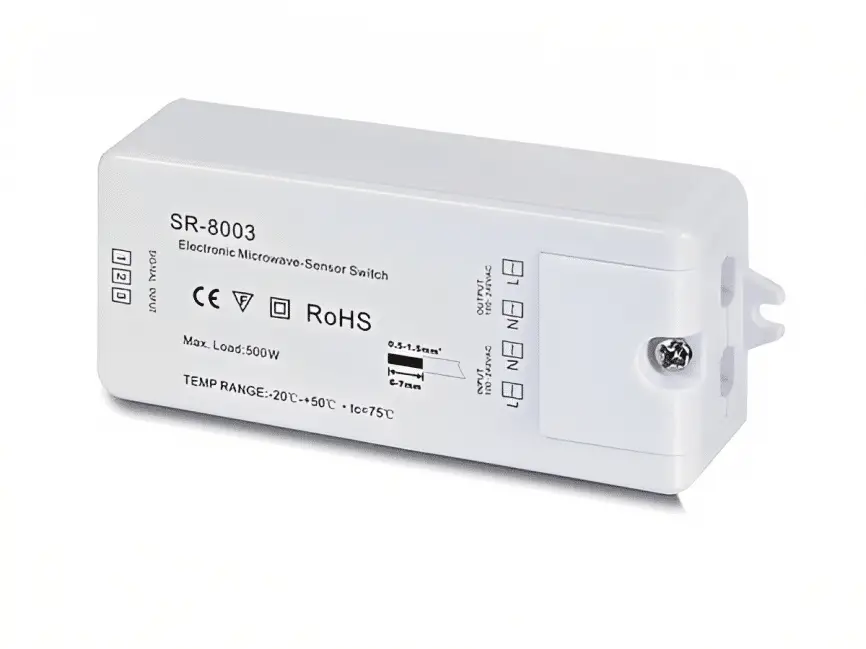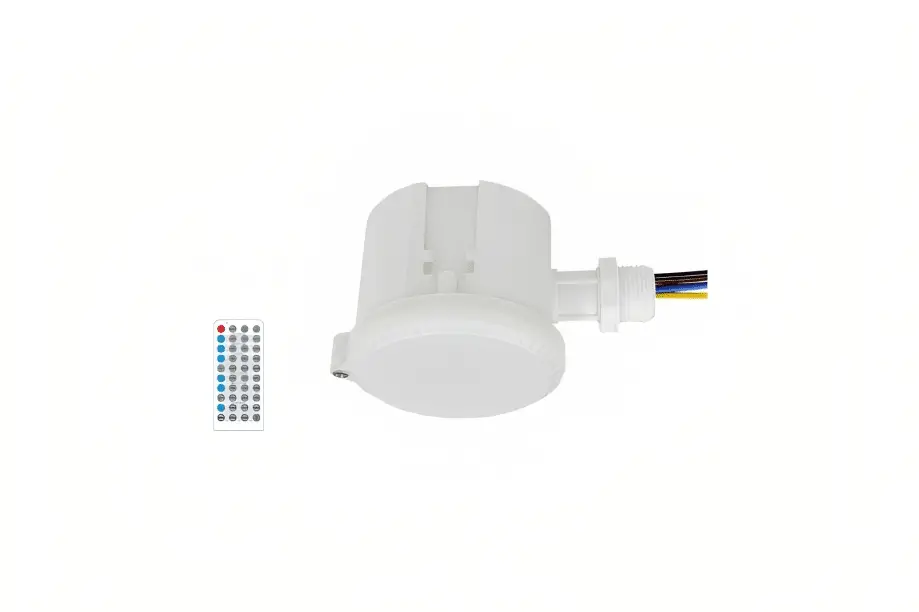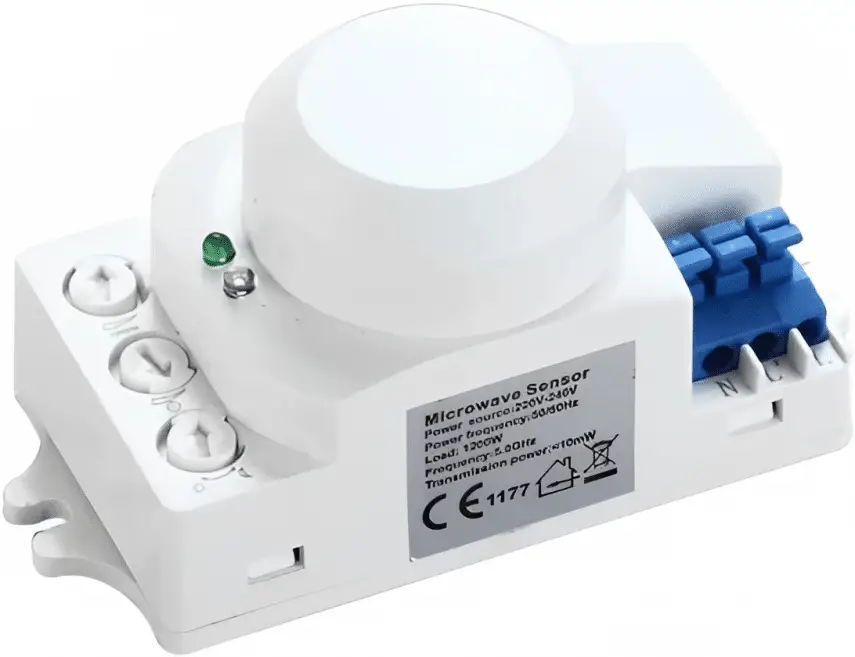Introduction
Microwave motion sensors are advanced technological devices that have revolutionized the field of motion detection and automation. These sensors utilize microwave technology to detect movement and provide an effective means of monitoring and controlling various systems. Whether it’s in security systems, automatic doors, or smart lighting, microwave motion sensors play a crucial role in enhancing convenience, efficiency, and safety.
Unlike traditional motion sensors that rely on infrared radiation, microwave motion sensors operate on the principle of electromagnetic waves. They emit continuous microwave signals and analyze the reflected signals to detect any changes in the surrounding environment. This enables them to accurately detect even the slightest movements within their range.
One of the key advantages of microwave motion sensors is their ability to penetrate obstacles such as walls, doors, and windows. This makes them highly effective in situations where line-of-sight detection is not possible. Additionally, these sensors are less prone to false alarms triggered by environmental factors like temperature changes, sunlight, or dust, making them highly reliable and suitable for various applications.

What is a microwave sensor used for?
A Microwave sensor uses high frequency radio waves operating at 360 degrees. They work in a similar way to radar, working on changes in the reflected radio waves. They are especially effective in Large areas such as Warehouses monitoring any changes in the return waves and responding immediately.
A microwave sensor is primarily used for motion detection and automation purposes. It employs microwave technology to detect movement within its range and trigger appropriate actions or responses. These sensors are widely utilized in various industries and applications due to their versatility and effectiveness.
In security systems, microwave sensors play a crucial role in detecting intruders or unauthorized individuals. They can be integrated into alarm systems, cameras, and access control systems to provide an added layer of protection. When an individual enters the monitored area, the sensor detects the motion and triggers an alarm or activates video recording, alerting the security personnel.
Microwave sensors are also extensively used in automatic door systems. They ensure smooth and efficient operation by detecting the presence of a person or object in the door’s path. When someone approaches the door, the sensor detects the motion and activates the opening mechanism, allowing for hands-free entry or exit.
What is the difference between microwave sensor and motion sensor?
Microwave sensors consume more energy than PIR sensors. PIR sensors consume about 0.8 to 1.0 Watt electricity and microwave sensors consume about 1.1 to 1.5 Watt. Microwave sensors are suitable for large area security applications where as PIR sensors are suitable for smaller and compact premises.
The terms “microwave sensor” and “motion sensor” are often used interchangeably, but they do have some distinct differences.
A motion sensor is a general term that refers to any sensor or device capable of detecting movement. It encompasses a wide range of technologies, including infrared (IR), ultrasonic, and microwave sensors. A motion sensor detects changes in its surroundings, such as the presence or movement of people, animals, or objects.
On the other hand, a microwave sensor is a specific type of motion sensor that utilizes microwave technology to detect motion. It operates on the principle of emitting continuous microwave signals and analyzing the reflected signals to detect any changes in the environment. Microwave sensors have the ability to penetrate obstacles like walls and doors, allowing for more versatile and flexible motion detection.
The key difference between microwave sensors and other motion sensors lies in their detection range and capabilities. Microwave sensors generally have a larger coverage area and are more effective at detecting movement through barriers. They are less susceptible to false alarms caused by environmental factors such as temperature changes or sunlight.
What is an example of a microwave sensor?
Synthetic aperture radar (SAR), microwave scatterometers, radar altimeters etc. are active microwave sensors. The passive type receives the microwave radiation emitted from objects on the ground. The microwave radiometer is one of the passive microwave sensors.
One example of a microwave sensor is the Doppler radar sensor. Doppler radar sensors use microwave technology to detect motion by measuring the change in frequency of microwave signals reflected off moving objects. This type of sensor is commonly found in applications such as automatic door systems, security systems, and traffic monitoring.
In automatic door systems, the Doppler radar sensor detects the presence and movement of individuals approaching the door. It emits continuous microwave signals and analyzes the frequency shift caused by the movement of a person. When a person is detected within the sensor’s range, it triggers the door to open, providing a convenient and hands-free access experience.
In security systems, Doppler radar sensors are utilized to detect intruders or unauthorized individuals in restricted areas. The sensor can accurately detect human motion while disregarding movement caused by environmental factors like wind or small animals. Once the sensor detects motion, it can trigger an alarm, activate surveillance cameras, or alert security personnel.
What is the advantage of microwave sensor?
What Are The Advantages Of A Microwave Sensor? A Microwave sensor is extremely sensitive across a large detection field. This sensitivity gives microwave sensors a distinct advantage as security lights with their detection of extremely fine motion.
Microwave sensors offer several advantages that make them a popular choice in various applications:
Detection Range: One of the key advantages of microwave sensors is their large detection range. They can cover a wider area compared to other motion sensors, making them suitable for monitoring large spaces or outdoor environments.
Penetration Capability: Microwave sensors have the ability to penetrate obstacles such as walls, doors, and windows. This allows them to detect motion even when there are physical barriers present, making them ideal for applications where line-of-sight detection is not possible.
Environmental Independence: Unlike infrared (IR) sensors that can be influenced by changes in temperature or sunlight, microwave sensors are less affected by environmental factors. They are not easily triggered by false alarms caused by environmental conditions, ensuring more reliable and accurate motion detection.
Versatility: Microwave sensors can detect both large and small movements, making them versatile in different scenarios. They can detect the presence of people, animals, or objects, allowing for a wide range of applications in security systems, automatic doors, lighting control, and more.
Stability: Microwave sensors are less prone to interference from external sources, ensuring a stable and consistent performance. They are not easily affected by radio frequency interference or electrical noise, resulting in reliable operation over time.
Longevity: Microwave sensors have a longer lifespan compared to some other motion sensor technologies. They are less affected by wear and tear or environmental conditions, making them durable and suitable for long-term use.

What is the name of microwave sensor?
The most commonly used microwave imaging sensor is the Synthetic Aperture Radar (SAR), that is a radar system capable of providing high-resolution microwave images.
One popular and commonly used microwave sensor is the “microwave motion sensor.” It is also known by other names such as “microwave presence detector” or “microwave occupancy sensor.” These terms are often used interchangeably to describe the same type of sensor that utilizes microwave technology for motion detection.
Additionally, there are specific types of microwave sensors that have their own names based on their functionality and application. One example is the “Doppler radar sensor.” Doppler radar sensors use microwave technology to detect motion by analyzing the frequency shift of reflected signals. They are widely used in automatic door systems, security systems, and traffic monitoring.
Another type of microwave sensor is the “microwave doppler sensor.” This sensor measures the frequency shift of microwave signals reflected off moving objects, similar to Doppler radar sensors. It is commonly used in applications such as occupancy detection, intrusion detection, and industrial automation.
What is the range of a microwave motion sensor?
Long-range: microwave motion sensors can detect objects located from distances spanning 25mm to 45000mm or more. However, this depends on the size, antenna design, and microwave availability.
The range of a microwave motion sensor can vary depending on the specific model and application. Generally, microwave motion sensors have a detection range that can span from a few meters to tens of meters.
For indoor applications, such as in residential or commercial settings, the range of a microwave motion sensor typically ranges from 5 to 15 meters. This range is suitable for detecting movement within rooms, hallways, or small spaces.
In outdoor applications, such as for security or perimeter monitoring, microwave motion sensors can have a larger detection range. They can cover distances of up to 30 meters or more, depending on the specific sensor and environmental factors. This enables them to effectively monitor large areas, driveways, parking lots, or outdoor perimeters.
It’s important to note that the detection range can be adjustable on some microwave motion sensors. The sensitivity and range settings can be customized to meet the specific needs of the application. This flexibility allows for fine-tuning the sensor’s performance based on the desired coverage area and sensitivity to different movement types.
What are the advantages of microwave motion sensors?
Microwave motion sensors offer several advantages that make them a popular choice in various applications:
Wide Detection Range
Microwave motion sensors have a wide coverage area, allowing them to monitor larger spaces effectively. They can detect motion over a broader range compared to other motion sensor technologies, making them suitable for applications such as security systems or outdoor monitoring.
Penetration Capability
Microwave signals can penetrate through walls, doors, and windows, enabling microwave motion sensors to detect movement even when there are physical barriers present. This makes them highly versatile and useful in situations where line-of-sight detection is not possible.
Reduced False Alarms
Microwave motion sensors are less prone to false alarms triggered by environmental factors such as temperature changes, sunlight, or dust. They rely on the Doppler effect and analyze the frequency shift of reflected signals, resulting in more accurate detection and fewer false positives.
Versatile Detection
Microwave sensors can detect a wide range of movements, from large motions to subtle movements. They are capable of detecting the presence of people, animals, or objects, making them adaptable for various applications such as automatic door systems, occupancy sensing, or energy-saving systems.
Are there any limitations or considerations for microwave motion sensors?
While microwave motion sensors offer numerous advantages, there are some limitations and considerations to keep in mind:
Privacy Concerns
Microwave motion sensors emit continuous microwave signals, which may raise privacy concerns in certain applications. Care should be taken to ensure that sensitive areas or areas where privacy is a concern are not monitored by these sensors.
Power Consumption
Microwave motion sensors typically require more power compared to other motion sensor technologies. This higher power consumption can impact the overall energy efficiency of the system and may require additional power sources or considerations in certain applications.
Interference
Microwave sensors can be susceptible to interference from other electronic devices operating in the same frequency range. This interference can affect their performance and may lead to false alarms or reduced sensitivity. Proper installation and positioning of the sensors can help minimize interference issues.
Environmental Factors
While microwave motion sensors are less prone to false alarms caused by environmental factors, certain conditions such as heavy rain, snow, or strong winds can potentially impact their performance. It is important to consider the environmental conditions and make necessary adjustments or additional safeguards when using microwave motion sensors.

Conclusion
A microwave motion sensor is a highly versatile and efficient technology that revolutionizes motion detection and automation. It utilizes microwave technology to detect movement by emitting continuous microwave signals and analyzing the reflected signals. Microwave motion sensors offer several advantages such as a wide detection range, penetration capability, reduced false alarms, versatile detection, reliable performance, and durability.
These sensors find widespread use in various applications, including security systems, automatic door systems, energy-saving systems, and traffic management. They enhance convenience, efficiency, and safety by accurately detecting motion, triggering appropriate actions, and optimizing the operation of various systems. While microwave motion sensors offer numerous benefits, there are considerations and limitations to keep in mind.
These include privacy concerns, power consumption, potential interference, environmental factors, cost, and the need for adjustability and fine-tuning. By carefully addressing these considerations and leveraging the advantages, microwave motion sensors can provide reliable and effective motion detection solutions in a wide range of settings. They contribute to improved security, automation, energy efficiency, and traffic management, enhancing the overall quality and functionality of various systems.

